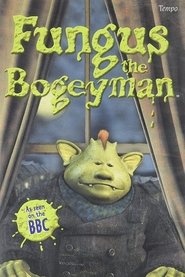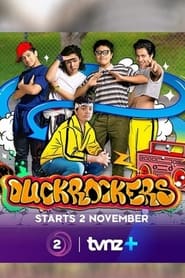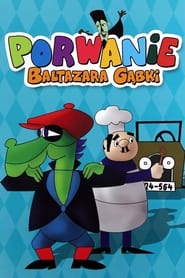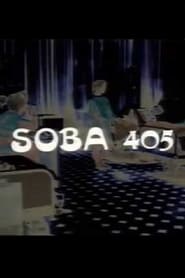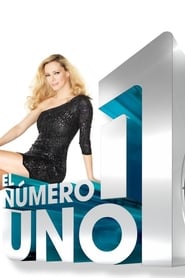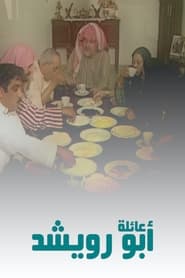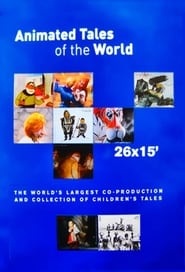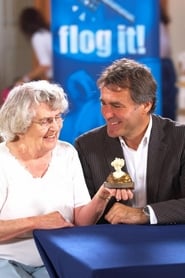Popular Family TV Series on Tub Tv - Page 355
-
Mukjizat Cinta
2009
-
Fungus the Bogeyman
2004
Fungus the Bogeyman
2004
BBC adaptation of Raymond Briggs' children's book. Fungus's job is to venture above Bogeydom and scare dry-cleaners (a Bogey's name for humans). But on one trip disaster strikes and a dry-cleaner discovers their existence in Bogeydom. The dry-cleaner, Jessica, strikes up a friendship with Fungus' children and escapes back home to tell her father George all about it. George then decides to stake-out the entrance to Bogeydom, in order to catch a real-life Bogeyman. -
Gemilerde Talim Var
2007
Gemilerde Talim Var
2007
-
Iranian Dinner
2024
Iranian Dinner
2024
It is a program where cultures and famous artists from all over the world cook and cultures fuse. -
Ferda Mravenec
1960
Ferda Mravenec
1960
-
Duckrockers
2022
Duckrockers
2022
star 8In the fresh, funny and heart-warming prequel to Sione's Wedding, Pacific Island teenagers and best friends Michael, Albert, Sefa and Stan come of age in inner-city Auckland in 1984. -
The Abduction of Balthazar Sponge
1969
star 8.3The Abduction of Balthazar Sponge (Polish: Porwanie Baltazara Gąbki) is a Polish-language fantasy animated series produced by Studio Filmów Rysunkowych from 1969 to 1970, that was based on 1965 children's book Porwanie Baltazara Gąbki by Stanisław Pagaczewski. The series had 1 season consisting of 13 episodes, each lasting from 6 to 7 minutes. The episodes were directed by Władysław Nehrebecki, Alfred Ledwig, Edward Wątor, Józef Byrdy, Bronisław Zeman, Wacław Wajser, and Stanisław Dülz, while the scrips were written by Zofia Olak and Leszek Mech. The series had a sequel ,Wyprawa profesora Gąbki, that was produced from 1978 to 1980. -
Room 405
0000
-
耍叉
2000
耍叉
2000
-
Si c'était vous !
1999
Si c'était vous !
1999
-
Chócalas Compayito
0000
Chócalas Compayito
0000
-
The Wild Bunch
1991
The Wild Bunch
1991
-
El Número Uno
2012
El Número Uno
2012
El Número Uno is a Spanish talent show which started in March 2012. In this TV show a group of five judges will evaluate 100 contestants to be 'The Number One' of music in Spain. -
Domisiladoré
2003
Domisiladoré
2003
-
Pratigya
0000
Pratigya
0000
star 8The Tele-serial Pratigya revolves around a family. This serial is fully family drama and Romance -
عائلة أبو رويشد
1998
عائلة أبو رويشد
1998
The events revolve around the life of (Abu Ruwaished) and his ramified and intertwined family consisting of his sons and daughters who are married to his sons and brother (Abu Marzouk). The whole family lives in the same house. The events deal with the relationships between each couple and the comic situations that happen between them. -
Animated Tales of the World
2001
star 7.8An animated anthology adapting a unique story from different countries around the world, with each episode featuring a different art style. It was the largest co-production in the history of broadcast television, involving 39 countries. -
The Fuse
2009
-
Flog It!
2002
 Netflix
Netflix
 Amazon Prime Video
Amazon Prime Video
 Apple iTunes
Apple iTunes
 Apple TV Plus
Apple TV Plus
 Disney Plus
Disney Plus
 Google Play Movies
Google Play Movies
 Paramount Plus
Paramount Plus
 Hulu
Hulu
 HBO Max
HBO Max
 YouTube
YouTube
 fuboTV
fuboTV
 Peacock
Peacock
 Peacock Premium
Peacock Premium
 Amazon Video
Amazon Video
 The Roku Channel
The Roku Channel
 AMC+
AMC+
 Kocowa
Kocowa
 Hoopla
Hoopla
 The CW
The CW
 Vudu
Vudu
 Starz
Starz
 Showtime
Showtime
 PBS
PBS
 Pantaflix
Pantaflix
 FXNow
FXNow
 Tubi TV
Tubi TV
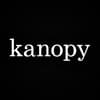 Kanopy
Kanopy
 Comedy Central
Comedy Central
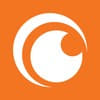 Crunchyroll
Crunchyroll
 Microsoft Store
Microsoft Store
 Redbox
Redbox
 Sun Nxt
Sun Nxt
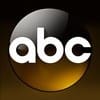 ABC
ABC
 DIRECTV
DIRECTV
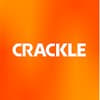 Crackle
Crackle
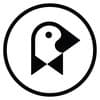 Fandor
Fandor
 Plex
Plex

